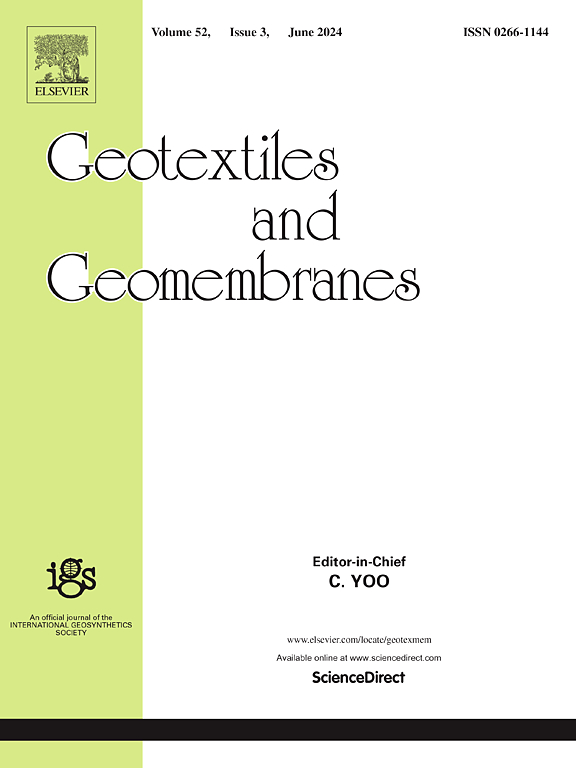An approximate solution of consolidation for double-layered ground with different smear radii by vertical drains
IF 6.2
1区 工程技术
Q1 ENGINEERING, GEOLOGICAL
引用次数: 0
Abstract
An analytical solution for consolidation of double-layered ground by vertical drains is proposed, in which only the radial seepage is taken into consideration and the smear radius varies with soil layers. To improve the computing efficiency, a simplified method for selecting serious solutions is presented. The approximate solution is illustrated by Tang's solution (Tang and Onitsuka, 2001) and a large radial consolidation test. The error caused by the forbiddance of vertical drainage can be ignored when the ratio of vertical time factor to radial time factor is small enough, for example, 1/200; and which is easy to satisfy in the field. Through adjusting the control precision of series solutions, the consolidation behavior at any soil layer can be calculated. Horizontal permeability coefficient and smear radius affect the consolidation rate, especially when changing them in the layer which has smaller consolidation coefficient. Moreover, the orthogonal relation for the double-layered and muti-layered system is demonstrated. Using the proposed method, analytical solution for consolidation of double-layered ground by vertical drains can be more acceptable to engineers.
不同涂抹半径双层地基垂直排水固结的近似解
提出了一种仅考虑径向渗流、涂抹半径随土层变化的竖向排水固结双层地基的解析解。为了提高计算效率,提出了一种选择严肃解的简化方法。近似解由Tang的解(Tang and Onitsuka, 2001)和大型径向固结试验说明。当竖向时间因子与径向时间因子之比足够小,如1/200时,可忽略竖向排水禁止所引起的误差;这在现场很容易满足。通过调整级数解的控制精度,可以计算任意土层的固结特性。水平渗透系数和涂抹半径会影响固结速率,尤其是在固结系数较小的土层中。此外,还证明了双层和多层系统的正交关系。采用该方法,竖向排水固结双层地基的解析解更能被工程人员所接受。
本文章由计算机程序翻译,如有差异,请以英文原文为准。
求助全文
约1分钟内获得全文
求助全文
来源期刊

Geotextiles and Geomembranes
地学-地球科学综合
CiteScore
9.50
自引率
21.20%
发文量
111
审稿时长
59 days
期刊介绍:
The range of products and their applications has expanded rapidly over the last decade with geotextiles and geomembranes being specified world wide. This rapid growth is paralleled by a virtual explosion of technology. Current reference books and even manufacturers' sponsored publications tend to date very quickly and the need for a vehicle to bring together and discuss the growing body of technology now available has become evident.
Geotextiles and Geomembranes fills this need and provides a forum for the dissemination of information amongst research workers, designers, users and manufacturers. By providing a growing fund of information the journal increases general awareness, prompts further research and assists in the establishment of international codes and regulations.
 求助内容:
求助内容: 应助结果提醒方式:
应助结果提醒方式:


